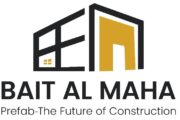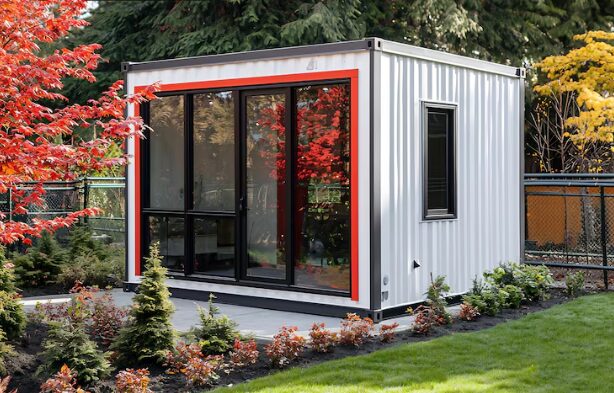Refurbished portacabin represents a cornerstone of innovative space solutions in the UAE, a nation defined by its rapid urban development, commitment to sustainability, and diverse geographic challenges. These modular, portable structures, meticulously restored to meet modern standards, offer an eco-friendly, flexible, and efficient alternative to traditional construction. In a country where towering skyscrapers coexist with sprawling desert landscapes, refurbished portacabin address the need for adaptable infrastructure across various industries, including construction, education, healthcare, and events. This comprehensive guide explores every aspect of refurbished portacabin, from their construction and applications to their environmental impact, regulatory compliance, and future potential, offering an unparalleled resource for professionals and individuals seeking sustainable space solutions in the UAE.
What Are Refurbished Portacabin?
Refurbished portacabins are pre-owned modular buildings that undergo a rigorous reconditioning process to restore their structural integrity, functionality, and aesthetic appeal. Unlike new portacabins, which are manufactured from scratch, refurbished units repurpose existing structures, making them a sustainable choice for temporary or semi-permanent spaces. This section explores their definition, construction, types, and distinguishing features, providing a detailed foundation for understanding their value in the UAE.
Definition and Purpose
A portacabin is a prefabricated, portable structure designed for rapid deployment and relocation. Refurbished portacabin are used units that are inspected, repaired, and upgraded to meet modern standards, ensuring they perform comparably to new units while reducing environmental impact. The refurbishment process involves:
- Structural Evaluation: Assessing frames, walls, roofs, and foundations for damage or wear.
- Component Replacement: Swapping out worn parts like insulation, flooring, or windows.
- Functional Upgrades: Enhancing electrical, plumbing, or HVAC systems for modern use.
- Aesthetic Restoration: Repainting, refinishing, and updating interiors to improve appearance.
- Compliance Verification: Ensuring adherence to UAE safety, fire, and environmental regulations.
The purpose of refurbishment is to extend the lifespan of portacabins, making them a cost-effective and sustainable solution for diverse applications, from construction site offices to community centers.
Materials and Construction
Refurbished portacabins are built to withstand the UAE’s harsh climate, characterized by temperatures exceeding 40°C, high humidity, and sand exposure. Common materials include:
- Galvanized Steel Frames: Provide structural strength and resist corrosion when coated with protective layers.
- Insulated Sandwich Panels: Comprise foam (polyurethane or polystyrene) or mineral wool cores clad in steel or aluminum, offering thermal and acoustic insulation.
- Fiberglass Reinforced Plastic (FRP): Lightweight, durable, and resistant to weathering, ideal for exterior panels.
- Aluminum Components: Used for windows, doors, and frames, balancing weight and durability.
- Vinyl or Plywood Flooring: Reinforced during refurbishment for durability and ease of maintenance.
During refurbishment, materials are inspected for wear, with damaged components replaced or upgraded. For example, insulation may be enhanced with higher R-value materials to improve energy efficiency, critical for reducing cooling costs in the UAE.
Types of Refurbished Portacabin
Refurbished portacabins come in various configurations to suit different needs:
- Single-Story Units: Compact cabins for small offices, security posts, or retail kiosks, typically 20–40 feet long.
- Multi-Story Units: Stacked or interconnected cabins for larger facilities like worker accommodations or schools.
- Fire-Rated Units: Equipped with fire-resistant materials (e.g., gypsum boards, mineral wool) for high-risk environments.
- Non-Fire-Rated Units: Suitable for low-risk applications like storage or temporary classrooms.
- Stackable Units: Designed for vertical expansion in space-constrained urban areas.
- Mobile Units: Fitted with wheels or skids for frequent relocation, ideal for events or remote projects.
Each type is tailored during refurbishment to meet specific industry standards, such as fire safety for construction or sanitation for healthcare.
Refurbishment vs. New Portacabins
Refurbished portacabin differ from new units in their lifecycle and environmental benefits. New portacabins require extensive raw materials and energy for production, whereas refurbishment reuses existing structures, minimizing resource consumption. Upgrades during refurbishment—such as modern insulation, energy-efficient windows, or fire-resistant coatings—often make refurbished units comparable to new ones in performance. In the UAE, where sustainability is a priority, refurbished portacabin align with green building goals by reducing waste and carbon emissions.
Advantages in the UAE Context
The UAE’s climate and rapid development make refurbished portacabins particularly valuable. Their ability to withstand heat, humidity, and sandstorms, combined with quick deployment, makes them ideal for projects requiring flexibility and durability. Refurbishment ensures these units meet modern standards, offering a sustainable alternative to permanent construction in a region where temporary infrastructure is often needed.
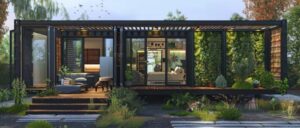
Benefits of a Refurbished Portacabin in the UAE
Refurbished portacabins offer numerous advantages, making them a preferred choice for various applications in the UAE. Their affordability, sustainability, and adaptability align with the nation’s need for efficient, eco-conscious infrastructure. This section explores these benefits in depth, highlighting their practical and environmental value.
Cost-Effectiveness
Refurbished portacabins are significantly more affordable than new construction or new portacabins due to their use of existing structures. The refurbishment process minimizes material and labor costs by:
- Reusing Frames: Steel or aluminum frames are repaired rather than replaced, reducing expenses.
- Upgrading Components: Only worn parts (e.g., insulation, wiring) are replaced, preserving existing materials.
- Minimal Site Preparation: Portacabins require no extensive foundations, lowering installation costs.
This affordability is critical for industries like construction, where temporary offices or accommodations are needed, or for schools expanding on limited budgets.
Sustainability and Environmental Impact
Refurbished portacabins contribute to sustainability by extending the lifecycle of existing structures. Key environmental benefits include:
- Reduced Waste: Refurbishment prevents used portacabins from ending up in landfills.
- Lower Resource Use: Reusing materials like steel and panels conserves natural resources.
- Energy Efficiency: Upgrades like high-performance insulation or LED lighting reduce energy consumption, crucial in the UAE’s hot climate where cooling demands are high.
- Carbon Footprint Reduction: Refurbishment requires less energy than manufacturing new units, lowering greenhouse gas emissions.
These benefits align with the UAE’s green building initiatives, such as Estidama and Dubai’s Green Building Regulations, which prioritize sustainable construction.
Portability and Flexibility
Portacabins are designed for easy relocation, and refurbished units retain this advantage. Their portability benefits include:
- No Permanent Foundations: Units can be placed on simple bases, enabling deployment in diverse locations, from Dubai’s urban sites to Fujairah’s remote deserts.
- Rapid Relocation: Disassembly and transport take days, not months, ideal for dynamic projects.
- Scalability: Units can be stacked or interconnected to create larger facilities as needed.
This flexibility makes refurbished portacabins suitable for temporary needs (e.g., events) or semi-permanent installations (e.g., worker camps).
Customization Potential
Refurbished portacabins can be tailored to meet specific needs, enhancing their versatility:
- Interior Modifications: Adding partitions, furniture, or specialized equipment (e.g., medical devices).
- Exterior Upgrades: Applying cladding, larger windows, or branded designs.
- Functional Enhancements: Installing HVAC, plumbing, or fire-resistant features.
In the UAE, customization can reflect cultural preferences, such as majlis-style interiors for community spaces or modern designs for urban offices.
Durability in UAE Conditions
The UAE’s climate—marked by extreme heat, humidity, and sand exposure—requires robust infrastructure. Refurbished portacabins are upgraded to withstand these conditions:
- Corrosion Resistance: Steel frames are coated with anti-corrosive paints.
- Thermal Insulation: High R-value materials reduce heat gain, lowering cooling costs.
- UV Protection: Exterior coatings protect against sun damage.
- Sand Resistance: Sealed joints and robust materials prevent sand infiltration.
These upgrades ensure refurbished portacabins remain functional for years, even in harsh environments.
Rapid Deployment
Refurbished portacabins can be installed quickly, meeting the UAE’s demand for fast-paced projects:
- Pre-Fabricated Nature: Units are ready for immediate use after minor assembly.
- Minimal Site Work: No need for extensive groundwork or permits.
- Customizable Setup: Units can be configured on-site to meet specific needs.
This rapid deployment is invaluable for construction projects, events, or emergency responses.
Adaptability to UAE’s Diverse Needs
The UAE’s varied geography and industries require adaptable solutions. Refurbished portacabins serve:
- Urban Areas: Compact offices or retail kiosks in Dubai and Abu Dhabi.
- Remote Regions: Worker camps or clinics in Al Ain or Ras Al Khaimah.
- Cultural Contexts: Majlis-style cabins for traditional gatherings.
Their versatility ensures they meet the needs of diverse sectors, from industrial to community-focused applications.
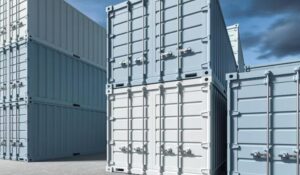
Applications of Refurbished Portacabin in the UAE
Refurbished portacabins are highly versatile, serving a wide range of industries in the UAE. Their adaptability, portability, and customization make them ideal for both temporary and long-term applications. This section explores their primary uses, with detailed examples and considerations.
Construction Industry
The construction sector is a major user of refurbished portacabins due to the UAE’s ongoing infrastructure boom. Applications include:
- Site Offices: Equipped with desks, internet, and HVAC for project management. Units can be customized with meeting rooms or data centers.
- Worker Accommodations: Multi-unit complexes with bedrooms, bathrooms, kitchens, and communal areas, designed for worker comfort.
- Storage Units: Secure, weather-resistant cabins for tools, equipment, or materials, often fitted with shelving or lockable doors.
- Temporary Facilities: Canteens, prayer rooms, or first-aid stations, meeting worker welfare standards.
These units are deployed on projects like highways, skyscrapers, or industrial facilities, offering rapid setup and relocation as sites change.
Education Sector
Educational institutions use refurbished portacabins to address space constraints, particularly during expansions or renovations:
- Temporary Classrooms: Fitted with whiteboards, ergonomic seating, and climate control to create conducive learning environments.
- Administrative Offices: Spaces for principals, counselors, or staff, with filing systems and connectivity.
- Libraries or Study Halls: Larger units with shelving, quiet zones, and acoustic insulation.
- Specialized Facilities: Science labs, art studios, or IT rooms with tailored equipment.
These solutions allow schools to maintain educational continuity without the delays or costs of permanent construction.
Healthcare Sector
Refurbished portacabins support healthcare needs, particularly in temporary or remote settings:
- Portable Clinics: Equipped with examination rooms, medical storage, and sanitation systems for rural or urban health campaigns.
- Isolation Units: Used during pandemics for quarantine or testing, with enhanced ventilation and sterilization.
- Staff Accommodations: Housing for medical personnel in remote or emergency settings.
- Medical Storage: Secure units for vaccines, equipment, or pharmaceuticals, with temperature control.
These units meet strict health and safety standards, ensuring reliability in critical applications.
Event Industry
The UAE’s vibrant event sector relies on refurbished portacabins for temporary infrastructure:
- Ticket Booths: Compact units with ticket windows, counters, and secure storage for festivals or exhibitions.
- Security Cabins: Small, strategically placed units for event security, with visibility and communication systems.
- VIP Lounges: Customized with luxury finishes, seating, and climate control for high-profile guests.
- Changing Rooms or Rest Areas: Private spaces for performers or attendees, with sanitation and mirrors.
Their rapid setup and teardown make them ideal for events like Dubai Expo or Abu Dhabi festivals.
Residential and Community Use
Refurbished portacabins serve residential and community needs, offering affordable and flexible solutions:
- Temporary Housing: For workers or low-income families, with bedrooms, kitchens, and bathrooms.
- Community Centers: Spaces for workshops, cultural events, or social gatherings, with flexible layouts.
- Majlis-Style Cabins: Designed with traditional UAE aesthetics, such as cushioned seating and Arabic decor.
- Container Homes: Converted portacabins for modern, sustainable living, with eco-friendly features.
These applications address the UAE’s diverse demographic and cultural needs, from urban housing to rural community spaces.
Industrial and Oilfield Applications
In the UAE’s oil and gas sector, refurbished portacabins are used for:
- Control Rooms: Equipped with monitoring systems and connectivity for remote operations.
- Worker Camps: Multi-unit complexes for oilfield workers, with robust insulation and sanitation.
- Storage Facilities: Secure units for equipment or hazardous materials, meeting strict safety standards.
These units are designed to comply with industry regulations, such as ADNOC standards, ensuring safety and durability.
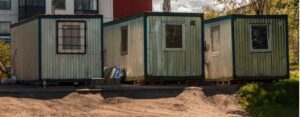
Refurbishment Process and Quality Standards
The refurbishment process is crucial in ensuring that refurbished portacabins meet modern standards for safety, functionality, and aesthetics. This section provides an in-depth examination of the process and quality benchmarks in the UAE.
Refurbishment Process
Refurbishment transforms used portacabins into reliable, high-quality structures through a multi-step process:
- Initial Inspection: A comprehensive assessment of the cabin’s condition, checking for:
- Structural damage (e.g., rust, dents, or weakened frames).
- Insulation degradation or water damage.
- Electrical or plumbing system functionality.
- Structural Repairs: Addressing issues like:
- Replacing corroded steel beams or panels.
- Reinforcing foundations or flooring for stability.
- Repairing roof leaks or wall cracks.
- Insulation Upgrades: Installing high R-value materials (e.g., polyurethane foam, mineral wool) to enhance thermal and acoustic performance.
- Electrical and Plumbing Overhauls: Rewiring systems, replacing outdated outlets, or installing modern plumbing for sanitation needs.
- Aesthetic Enhancements: Repainting exteriors with UV-resistant coatings, refinishing interiors with new flooring or fixtures, and updating windows or doors.
- Safety Upgrades: Adding fire-resistant coatings, smoke detectors, fire extinguishers, or emergency exits to meet UAE regulations.
- Environmental Testing: Evaluating performance in heat, humidity, and sand exposure, ensuring suitability for UAE conditions.
- Final Quality Checks: Conducting stress tests, leak tests, and compliance verifications to ensure readiness for deployment.
Each step is tailored to the cabin’s intended use, ensuring it meets specific industry requirements, such as fire safety for construction or sanitation for healthcare.
Quality Standards
Refurbished portacabins in the UAE must adhere to stringent quality standards:
- Fire Safety: Fire-rated units use materials like gypsum boards or mineral wool, tested for 30–60 minute fire resistance, per UAE fire codes.
- Structural Integrity: Units are stress-tested to withstand wind loads (up to 120 km/h), seismic activity, and extreme heat (up to 50°C).
- Thermal Performance: Insulation R-values (e.g., R-13 to R-19) ensure energy efficiency, critical for reducing cooling costs.
- Environmental Compliance: Materials are checked for eco-friendliness, aligning with UAE’s green building codes.
- Sanitation Standards: For accommodations or healthcare, plumbing systems meet health regulations, including water quality and waste management.
These standards are enforced by UAE municipalities and industry bodies, ensuring refurbished portacabins are safe, durable, and environmentally responsible.
UAE-Specific Considerations
The UAE’s climate and regulations require additional focus:
- Heat Resistance: Insulation and coatings are optimized for temperatures exceeding 40°C.
- Sand Protection: Sealed joints and robust materials prevent sand infiltration.
- Regulatory Alignment: Compliance with ADNOC standards for oilfields or Dubai Municipality codes for urban projects.
This rigorous process ensures refurbished portacabins are reliable for diverse applications.
Cost Analysis: Refurbished vs. New Portacabin
This section explores the cost-related factors of refurbished portacabins compared to new units, focusing on variables influencing affordability and long-term value, without specific pricing.
Factors Influencing Cost
The cost of refurbished portacabins depends on:
- Size and Configuration: Larger or multi-story units require more materials and labor.
- Customization Level: Features like HVAC, plumbing, or fire-resistant coatings increase costs.
- Condition of Original Unit: Heavily damaged units need extensive repairs, impacting cost.
- Safety Upgrades: Fire-rated materials or structural reinforcements add to expenses.
- Delivery and Installation: Logistics for remote areas like Fujairah or Ras Al Khaimah may increase costs.
New portacabins, by contrast, involve higher material and manufacturing costs due to:
- Full Production: Building from scratch requires more resources.
- Custom Design: New units are often tailored to specific orders, increasing labor.
- Site Preparation: May require more extensive groundwork than refurbished units.
Cost-Saving Benefits
Refurbished portacabins offer savings through:
- Reused Materials: Existing frames and panels reduce material costs.
- Lower Energy Use: Refurbishment consumes less energy than manufacturing.
- Minimal Site Work: No need for permanent foundations, reducing installation costs.
- Flexible Configurations: Standard units are more affordable than custom new builds.
These savings make refurbished portacabins ideal for budget-conscious projects, such as temporary offices or event infrastructure.
Long-Term Value
Refurbished portacabins provide long-term value through:
- Durability: Upgrades like corrosion-resistant coatings extend lifespan (10–20 years).
- Low Maintenance: Modern materials reduce upkeep needs, such as repainting or insulation replacement.
- Energy Efficiency: High-performance insulation lowers cooling costs in the UAE’s climate.
- Resale Potential: Refurbished units can be resold or repurposed, retaining value.
These factors ensure refurbished portacabins remain cost-effective over their lifecycle, particularly for semi-permanent or frequently relocated installations.
UAE-Specific Considerations
The UAE’s climate and project demands enhance the value of refurbished portacabins:
- Rapid Deployment: Quick setup reduces project delays, saving time and resources.
- Climate Adaptation: Upgraded insulation and coatings minimize energy costs.
- Regulatory Compliance: Refurbished units meet UAE standards, avoiding costly modifications.
This makes refurbished portacabins a practical choice for the UAE’s dynamic environment.
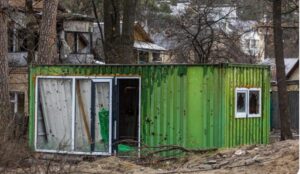
Buying Guide for Refurbished Portacabin in the UAE
Choosing a refurbished portacabin requires careful consideration to ensure it meets project needs and complies with UAE regulations. This section provides a detailed guide for buyers.
Key Factors to Consider
Evaluate the following when selecting a refurbished portacabin:
- Size and Layout: Match dimensions to the intended use (e.g., 20ft for small offices, 40ft for accommodations).
- Safety Features: Ensure fire ratings, structural integrity, and climate resistance meet industry standards.
- Customization Needs: Determine requirements for partitions, plumbing, HVAC, or aesthetic upgrades.
- Delivery Timeline: Confirm the supplier’s ability to meet project deadlines, critical for time-sensitive applications.
- Regulatory Compliance: Verify adherence to UAE fire, safety, and environmental regulations, such as Dubai Municipality codes.
Inspection Tips
Before purchasing, inspect the portacabin for:
- Structural Condition: Check for rust, dents, or weakened frames, ensuring repairs are robust.
- Insulation Quality: Verify insulation is intact and suitable for UAE’s heat (e.g., R-13 or higher).
- Electrical Systems: Test wiring, outlets, and lighting for functionality and safety.
- Plumbing Systems: Ensure pipes, fixtures, and drainage work, if applicable.
- Aesthetic Condition: Confirm interiors and exteriors are clean, with no visible wear or damage.
- Documentation: Request refurbishment records, compliance certificates, and maintenance history.
Rental vs. Purchase
Buyers must decide between renting or purchasing:
- Rental:
- Ideal for short-term needs (e.g., events, temporary projects).
- Offers flexibility with no long-term commitment.
- May involve recurring costs but avoids ownership responsibilities.
- Purchase:
- Suitable for long-term use (e.g., permanent offices, housing).
- Provides ownership and potential resale value.
- Requires upfront investment but eliminates rental fees.
Consider project duration, relocation needs, and budget when choosing.
Supplier Selection
Choose suppliers with:
- Refurbishment Expertise: Proven experience in reconditioning portacabins for UAE conditions.
- Quality Assurance: Rigorous testing for structural, fire, and environmental standards.
- Support Services: Maintenance, warranties, or relocation assistance.
- Customization Capabilities: Ability to tailor units to specific needs, such as healthcare or cultural designs.
Engaging with reputable suppliers ensures a reliable, high-quality portacabin tailored to project requirements.
Practical Considerations in the UAE
- Climate Adaptation: Ensure units have insulation and coatings for heat and sand resistance.
- Logistics: Confirm delivery feasibility, especially for remote areas like Al Ain or Fujairah.
- Permits: Verify compliance with local regulations, which may require permits for temporary structures.
This guide equips buyers with the knowledge to select the right refurbished portacabin for their needs.
Regulatory and Safety Considerations in the UAE
Refurbished portacabins in the UAE must comply with stringent regulations to ensure safety, durability, and environmental responsibility. This section outlines key regulatory and safety considerations.
Fire Safety Regulations
Fire safety is paramount, especially in high-risk industries like construction or oil and gas:
- Fire-Resistant Materials: Units must use materials like gypsum boards, mineral wool, or fire-rated coatings, tested for 30–60 minute fire resistance.
- Safety Features: Include smoke detectors, fire extinguishers, and clearly marked emergency exits.
- Municipality Codes: Dubai, Abu Dhabi, and Sharjah enforce fire codes requiring regular inspections and compliance documentation.
Fire-rated portacabins undergo additional testing to ensure they meet these standards, critical for urban or industrial settings.
Structural and Environmental Regulations
UAE municipalities enforce regulations to ensure structural integrity and environmental compliance:
- Structural Standards: Units must withstand wind loads (up to 120 km/h), seismic activity, and extreme heat (up to 50°C).
- Environmental Codes: Materials must align with green building standards, minimizing waste and emissions.
- Sanitation Requirements: For accommodations or healthcare units, plumbing systems must meet health codes, including water quality and waste management.
Industry-Specific Standards
Certain industries have additional requirements:
- Oil and Gas (e.g., ADNOC Standards): Portacabins used in oilfields must meet safety guidelines for fire resistance, ventilation, and structural durability.
- Healthcare: Units require sterilization, ventilation, and accessibility features, such as ramps or wide doors.
- Events: Temporary structures must comply with crowd safety, accessibility, and fire codes.
UAE-Specific Considerations
- Climate Adaptation: Units must be tested for heat and humidity resistance, with insulation and coatings to prevent degradation.
- Municipality Approvals: Temporary structures may require permits, especially in urban areas like Dubai or Abu Dhabi.
- Cultural Compliance: Units for community or religious use (e.g., majlis or mosques) must align with cultural design standards.
Compliance ensures refurbished portacabins are safe, reliable, and environmentally responsible for their intended use.

Case Studies and Success Stories
Hypothetical but realistic case studies illustrate the versatility and impact of refurbished portacabins in the UAE. This section provides detailed examples across industries.
Case Study 1: Construction Site Office in Dubai
A large-scale construction project in Dubai required a temporary site office for 50 project managers and engineers. A refurbished portacabin was deployed, featuring:
- Customizations: Partitioned offices, high-speed internet, HVAC, and ergonomic furniture.
- Safety Features: Fire-rated materials, smoke detectors, and emergency exits.
- Climate Adaptations: High R-value insulation and UV-resistant coatings.
- Outcome: The office was installed in 48 hours, supporting efficient project management and reducing cooling costs by 20% due to insulation upgrades.
Case Study 2: Portable Classroom in Sharjah
A public school in Sharjah needed additional classrooms during a campus expansion. Refurbished portacabins were used, equipped with:
- Features: Whiteboards, acoustic insulation, ergonomic seating, and climate control.
- Compliance: Adherence to Sharjah educational and fire safety standards.
- Benefits: Installed in one week, accommodating 200 students without disrupting classes.
- Outcome: The classrooms provided a comfortable learning environment, with noise reduction enhancing focus.
Case Study 3: Event Ticket Booth in Abu Dhabi
An international cultural festival in Abu Dhabi required ticket booths. Refurbished portacabins were customized with:
- Design: Branded exteriors, ticket windows, secure cash storage, and LED lighting.
- Portability: Rapid setup and teardown within 24 hours.
- Safety: Fire-resistant materials and crowd safety features.
- Outcome: The booths handled high visitor traffic, enhancing event efficiency and aesthetics.
Case Study 4: Medical Clinic in Fujairah
A rural healthcare campaign in Fujairah used a refurbished portacabin as a mobile clinic, featuring:
- Equipment: Examination rooms, medical storage, and sanitation systems.
- Compliance: Adherence to UAE health and safety regulations.
- Benefits: Deployed in 72 hours, providing accessible healthcare to remote communities.
- Outcome: The clinic served 500 patients monthly, with ventilation ensuring a sterile environment.
These case studies highlight the adaptability and reliability of refurbished portacabins across diverse applications.
Future Trends in Refurbished Portacabin
The refurbished portacabin industry in the UAE is evolving, driven by technological advancements, sustainability goals, and changing needs. This section explores emerging trends.
Sustainable Construction
The UAE’s Vision 2030 emphasizes sustainability, driving demand for eco-friendly portacabins:
- Recycled Materials: Increased use of reclaimed steel, wood, and composites.
- Energy Efficiency: Integration of solar panels, LED lighting, and smart thermostats.
- Circular Economy: Emphasis on reusing and refurbishing units to minimize waste.
Modular and Scalable Designs
Modular designs are gaining popularity for their flexibility:
- Stackable Units: Allow vertical expansion in urban areas with limited space.
- Interconnectable Systems: Create large complexes, such as worker villages or schools.
- Prefabricated Components: Speed up assembly and customization.
Smart Technology Integration
Technology enhances functionality:
- IoT Systems: Monitor temperature, security, and energy usage in real-time.
- Automated Features: Smart lighting, climate control, and access systems.
- Renewable Energy: Solar panels and battery storage for off-grid use.
Emerging Applications
New use cases are emerging:
- Pop-Up Retail: Temporary shops or cafes for product launches.
- Coworking Spaces: Modular offices for freelancers and startups.
- Disaster Relief: Rapid-deployment shelters for emergencies.
- Eco-Tourism: Sustainable cabins for desert or coastal resorts.
UAE-Specific Trends
- Climate Adaptation: Enhanced insulation and coatings for extreme heat.
- Regulatory Evolution: Stricter fire and environmental standards.
- Cultural Integration: Designs reflecting UAE’s heritage, like majlis-style cabins.
These trends position refurbished portacabins as a forward-thinking solution for the UAE’s future.

History of Portacabins in the UAE
The history of portacabins in the UAE reflects the nation’s rapid development and need for flexible infrastructure. This section traces their evolution.
Early Adoption (1970s–1980s)
Portacabins were introduced during the UAE’s oil boom in the 1970s, when rapid construction demanded temporary infrastructure:
- Initial Use: Basic steel and wood cabins for construction site offices and worker accommodations.
- Key Features: Simple designs with minimal insulation or customization.
- Context: Supported early infrastructure projects, such as oilfields and urban developments.
Rise of Refurbishment (1990s)
By the 1990s, refurbishment emerged as a sustainable alternative:
- Drivers: Growing awareness of cost and environmental benefits.
- Advancements: Improved materials (e.g., sandwich panels) and compliance with stricter regulations.
- Applications: Expanded to schools, healthcare, and events as UAE’s economy diversified.
Modern Innovations (2000s–Present)
The 2000s saw significant advancements:
- Fire-Rated Units: Introduced to meet safety standards in high-risk industries.
- Modular Designs: Enabled scalable solutions for large projects, like worker camps.
- Sustainability Focus: Aligned with UAE’s green building initiatives, using recycled materials and energy-efficient upgrades.
- Cultural Adaptations: Designs reflecting UAE’s heritage, such as majlis-style cabins.
Today, refurbished portacabins are integral to the UAE’s infrastructure, supporting its vision for sustainable and rapid development.
Technical Specifications of Refurbished Portacabin
Technical specifications are critical for assessing the suitability of refurbished portacabins. This section provides a detailed overview.
Dimensions and Configurations
Refurbished portacabins come in various sizes:
- Standard Sizes: 20ft (6m) or 40ft (12m) lengths, 8–10ft (2.4–3m) widths, 8.5ft (2.6m) heights.
- Custom Sizes: Tailored for specific needs, such as compact kiosks or large complexes.
- Configurations: Single rooms, partitioned offices, or multi-unit setups for accommodations.
Materials
Key materials include:
- Frames: Galvanized steel, treated with anti-corrosive coatings for durability.
- Walls and Roofs: Insulated sandwich panels with polyurethane, polystyrene, or mineral wool cores, clad in steel or aluminum.
- Flooring: Reinforced plywood, vinyl, or tiles, upgraded for wear resistance.
- Windows and Doors: Aluminum or UPVC, with double-glazing for energy efficiency.
Features
Refurbished portacabins are equipped with:
- HVAC Systems: Air conditioning units for cooling, with capacities of 1–3 tons depending on size.
- Electrical Systems: Rewired with modern outlets, lighting (LED or fluorescent), and circuit breakers.
- Plumbing: Optional for accommodations or healthcare, with water tanks and drainage systems.
- Safety Features: Fire alarms, extinguishers, and emergency exits, meeting UAE fire codes.
Performance Standards
Units are tested for:
- Thermal Insulation: R-values of 13–19 for energy efficiency.
- Fire Resistance: Fire-rated materials withstand 30–60 minutes of fire exposure.
- Structural Load: Withstand wind speeds up to 120 km/h and seismic loads per UAE codes.
- Environmental Durability: UV-resistant coatings and sealed joints for sand and heat resistance.
These specifications ensure refurbished portacabins meet the UAE’s demanding requirements.
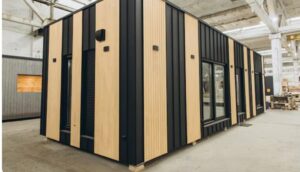
Environmental Impact of Refurbished Portacabin
Refurbished portacabins contribute significantly to environmental sustainability, aligning with the UAE’s green building goals. This section explores their eco-friendly benefits.
Reduced Resource Consumption
Refurbishment reuses existing structures, minimizing:
- Raw Materials: Less steel, concrete, or wood is needed compared to new units.
- Energy: Refurbishment consumes less energy than manufacturing.
- Waste: Prevents used cabins from ending up in landfills.
Energy Efficiency
Foucault
Upgrades during refurbishment enhance energy performance:
- Insulation: High R-value materials (e.g., polyurethane foam) reduce heat gain, lowering cooling costs.
- Windows: Double-glazed or low-E glass minimizes heat transfer.
- Lighting: LED systems reduce electricity consumption by up to 70% compared to incandescent bulbs.
Carbon Footprint
Refurbished portacabins have a lower carbon footprint due to:
- Reduced Production: Less energy-intensive than new manufacturing.
- Extended Lifecycle: Reusing units extends their functional life.
- Recyclable Materials: Steel, aluminum, and insulation can be recycled or reused.
Alignment with UAE Initiatives
The UAE’s green building codes, such as Estidama and Dubai’s Green Building Regulations, emphasize:
- Resource Conservation: Refurbishment supports this by reusing materials.
- Energy Efficiency: Upgraded insulation and systems reduce energy use.
- Waste Reduction: Minimizes construction debris, aligning with sustainability goals.
These benefits make refurbished portacabins a key component of the UAE’s sustainable infrastructure.
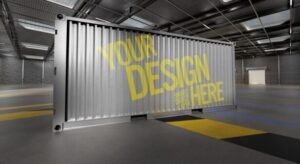
Customization Options for Refurbished Portacabin
Customization enhances the versatility of refurbished portacabins, allowing users to tailor them to specific needs. This section details the possibilities.
Interior Customizations
Interiors can be modified for functionality and comfort:
- Partitions: Create multiple rooms, such as offices, bedrooms, or examination rooms.
- Furniture: Add desks, chairs, beds, or built-in storage for specific uses.
- Lighting: Install LED, fluorescent, or ambient lighting for aesthetics and efficiency.
- Flooring: Upgrade to vinyl, carpet, or tiles for durability and style.
- Acoustic Insulation: Add soundproofing for quiet environments, like classrooms or offices.
Exterior Customizations
Exteriors can be enhanced for appearance and durability:
- Cladding: Apply wood, aluminum, or composite panels for modern or traditional aesthetics.
- Windows and Doors: Add larger windows or branded entrances for visibility or access.
- Paint and Branding: Use UV-resistant paints or logos for durability and recognition.
- Roofing: Upgrade with reflective coatings to reduce heat absorption.
Specialized Features
Customizations can address specific needs:
- Security: Reinforced doors, locks, or CCTV integration for safety.
- Sanitation: Plumbing for bathrooms, kitchens, or medical facilities.
- Climate Control: Advanced HVAC systems for extreme temperatures, with 1–3 ton units.
- Accessibility: Ramps, wide doors, or handrails for inclusivity.
Cultural Adaptations
In the UAE, portacabins can reflect cultural preferences:
- Majlis-Style Interiors: Traditional seating, Arabic decor, and cushioned flooring.
- Mosque Features: Mihrab, qibla alignment, and prayer rugs for religious use.
- Luxury Finishes: High-end materials for VIP or residential applications.
Examples
- Construction Office: Partitioned rooms, internet connectivity, and ergonomic furniture.
- Mobile Clinic: Sterile surfaces, medical storage, and ventilation systems.
- Event Booth: Branded exteriors, ticket windows, and secure storage.
Customization ensures refurbished portacabins meet diverse functional and cultural needs.
Maintenance and Longevity of Refurbished Portacabin
Proper maintenance ensures refurbished portacabins remain functional and durable. This section covers upkeep and lifespan considerations.
Maintenance Practices
Key tasks include:
- Structural Checks: Inspect frames, walls, and roofs for corrosion, dents, or leaks every 6–12 months.
- Insulation Maintenance: Ensure insulation remains intact to maintain energy efficiency.
- Cleaning: Regular cleaning of interiors (floors, fixtures) and exteriors (panels, windows) to prevent wear.
- System Upkeep: Test electrical (outlets, wiring), plumbing (pipes, drains), and HVAC systems quarterly.
- Coating Maintenance: Repaint exteriors every 2–3 years with UV-resistant coatings.
Lifespan
With proper care, refurbished portacabins can last 10–20 years, depending on:
- Material Quality: High-grade steel, insulation, and coatings extend lifespan.
- Environmental Exposure: Coastal areas (e.g., Fujairah) require more frequent maintenance due to humidity.
- Usage Intensity: Heavy use (e.g., worker accommodations) may accelerate wear.
Maintenance Benefits
Regular maintenance:
- Prevents Major Repairs: Early detection of issues like rust or leaks saves resources.
- Enhances Efficiency: Well-maintained insulation lowers cooling costs by 15–20%.
- Preserves Aesthetics: Keeps cabins visually appealing for clients or staff.
- Ensures Compliance: Maintains adherence to UAE safety and environmental standards.
UAE-Specific Considerations
- Heat Management: Regular checks on insulation and HVAC to combat high temperatures.
- Sand Protection: Cleaning seals and joints to prevent sand buildup.
- Regulatory Inspections: Periodic checks to ensure compliance with municipality codes.
Proper maintenance maximizes the longevity and performance of refurbished portacabins.
Financing and Payment Options for Refurbished Portacabin
This section explores financing considerations for acquiring refurbished portacabins, focusing on options and budgeting strategies, without specific costs.
Purchase Options
Buyers can choose:
- Outright Purchase: Ideal for long-term use, offering ownership and resale potential.
- Lease-to-Own: Allows gradual payments with the option to own, balancing affordability and ownership.
Rental Options
Renting suits temporary needs:
- Short-Term Leases: For events or short projects (1–6 months), offering flexibility.
- Long-Term Leases: For extended projects (e.g., construction), typically 6–24 months.
Budgeting Considerations
Plan for:
- Customization Needs: Features like plumbing, HVAC, or fire safety add to costs.
- Delivery and Installation: Logistics for remote areas like Al Ain or Ras Al Khaimah.
- Maintenance: Ongoing upkeep for insulation, coatings, and systems.
- Permits: Potential costs for regulatory approvals in urban areas.
Cost-Saving Strategies
Maximize affordability by:
- Bulk Purchasing: Acquiring multiple units for large projects to reduce per-unit costs.
- Standard Configurations: Avoiding extensive customizations for simpler, cheaper units.
- Local Suppliers: Reducing transportation costs by choosing nearby providers.
- Energy Efficiency: Investing in insulation or LED lighting to lower long-term energy costs.
These strategies ensure refurbished portacabins are financially viable for diverse projects.
Refurbished Portacabin for Emergency Use
Refurbished portacabins are ideal for emergency situations, offering rapid, reliable solutions. This section explores their applications in crises.
Disaster Relief
Portacabins can be deployed as:
- Temporary Shelters: For displaced individuals during floods, sandstorms, or other disasters, with basic amenities like beds and sanitation.
- Medical Camps: Equipped with examination rooms, sterilization systems, and medical storage for emergency healthcare.
- Command Centers: Fitted with communication systems and workspaces for coordinating relief efforts.
Rapid Deployment
Their portability enables:
- Quick Setup: Installed within hours or days, critical for urgent needs.
- Minimal Infrastructure: No foundations required, ideal for remote or damaged areas.
- Custom Features: Sanitation, power, or medical equipment tailored to emergency needs.
UAE-Specific Applications
- Pandemic Response: Used for testing or isolation units during health crises, with enhanced ventilation.
- Construction Emergencies: Rapid replacement of damaged site offices or accommodations.
- Desert or Coastal Crises: Shelters or facilities in remote areas like Fujairah or Ras Al Khaimah.
Features for Emergencies
- Ventilation: High-capacity systems for medical or crowded settings.
- Power Solutions: Solar panels or generators for off-grid use.
- Mobility: Units with wheels or skids for frequent relocation.
These capabilities make refurbished portacabins a critical tool for emergency response in the UAE.
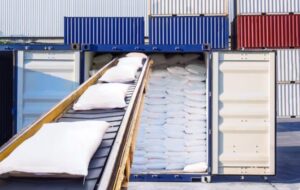
Refurbished Portacabin vs. Shipping Container Conversions
Refurbished portacabins and shipping container conversions are often compared as modular solutions. This section clarifies their differences.
Design and Purpose
- Portacabins: Designed for habitation or office use, with built-in insulation, windows, and HVAC systems.
- Containers: Built for shipping, requiring extensive modifications for livability, such as cutting windows or adding insulation.
Pros and Cons
- Portacabins:
- Pros: Pre-designed for human use, easier to refurbish, lighter (2–5 tons), and quicker to deploy.
- Cons: Limited size options (typically 20–40ft) and less robust for heavy-duty storage.
- Containers:
- Pros: Larger sizes (up to 40ft), robust steel structure, and stackable for vertical expansion.
- Cons: Heavier (8–10 tons), more complex modifications, and higher energy costs for insulation.
Suitability for UAE
Portacabins are often preferred due to:
- Climate Adaptation: Better insulation for heat management (R-13 to R-19).
- Regulatory Compliance: Easier to align with UAE fire and safety codes.
- Portability: Lighter and easier to relocate across urban or remote sites.
Applications
- Portacabins: Ideal for offices, classrooms, or event booths due to built-in features.
- Containers: Better for storage or heavy-duty industrial use but less suited for habitation without significant upgrades.
Portacabins are more versatile for the UAE’s diverse needs, particularly for temporary infrastructure.
- Selling Used Portacabins in the UAE
- Selling used portacabins is a viable option for owners looking to repurpose assets. This section outlines the process and considerations.
Preparation for Sale
- Inspection: Assess the cabin’s condition, checking for structural damage, insulation degradation, or system failures.
- Repairs: Fix minor issues like rust, leaks, or worn flooring to enhance appeal.
- Cleaning: Ensure interiors (floors, fixtures) and exteriors (panels, windows) are clean and presentable.
- Documentation: Provide refurbishment records, maintenance history, and compliance certificates.
Benefits of Selling
- Sustainability: Contributes to the circular economy by enabling further refurbishment.
- Asset Recovery: Recovers value from unused or outdated units.
- Market Demand: High demand for used units in construction, events, or remote projects.
Process
- Supplier Engagement: Work with refurbishers or rental services specializing in used portacabins.
- Valuation: Assess the cabin’s condition, size, and features to determine its worth.
- Logistics: Arrange transportation to the buyer or refurbisher, considering UAE’s urban and remote sites.
- Negotiation: Discuss terms to ensure fair value, factoring in customization or upgrades.
UAE-Specific Considerations
- Climate Wear: Units in coastal areas (e.g., Fujairah) may show more corrosion, requiring repairs.
- Regulatory Compliance: Ensure units meet UAE standards for resale, such as fire safety.
- Market Trends: Demand is high for construction and event applications, facilitating sales.
Selling used portacabins supports sustainability and meets the UAE’s need for flexible infrastructure.
Refurbished Portacabin in Remote UAE Locations
Refurbished portacabins are ideal for remote areas like Al Ain, Fujairah, or Ras Al Khaimah, where infrastructure is limited. This section explores their use.
Challenges
- Logistics: Transporting units to remote sites with poor road access or infrastructure.
- Climate: Extreme heat (up to 50°C), sandstorms, and humidity in desert or coastal areas.
- Utilities: Limited access to water, power, or sanitation in remote regions.
Solutions
- Lightweight Designs: Units weighing 2–5 tons are easier to transport than heavier containers.
- Off-Grid Features: Solar panels, water tanks, or generators for self-sufficiency.
- Rapid Deployment: Minimal setup time (1–3 days) for urgent needs.
- Climate Adaptations: High R-value insulation, UV-resistant coatings, and sealed joints.
Applications
- Worker Camps: Multi-unit complexes for oilfield or construction workers, with bedrooms and sanitation.
- Community Facilities: Schools, clinics, or community centers for rural populations.
- Tourism: Eco-lodges or desert camp accommodations with cultural designs.
- Emergency Shelters: Rapid-deployment units for disaster relief in remote areas.
Examples
- Oilfield Camp in Al Ain: Refurbished portacabins with HVAC and sanitation for 100 workers.
- Rural Clinic in Fujairah: Mobile unit with medical equipment and ventilation for healthcare access.
- Desert Eco-Lodge in Ras Al Khaimah: Customized cabins with solar power and traditional decor.
These applications highlight the adaptability of refurbished portacabins in remote settings.
Technology Integration in Refurbished Portacabin
Technology enhances the functionality and efficiency of refurbished portacabins. This section covers key integrations.
Smart Features
- IoT Systems: Monitor temperature, humidity, security, or energy usage in real-time via sensors.
- Automated Lighting: Motion-sensor or smart-controlled LED lights for efficiency.
- Climate Control: Smart thermostats adjust cooling based on occupancy or time, reducing energy use by 10–15%.
Renewable Energy
- Solar Panels: 1–5 kW systems power off-grid units in remote areas.
- Energy Storage: Lithium-ion batteries store solar energy for consistent supply.
- Energy-Efficient Systems: LED lighting and high-efficiency HVAC reduce grid reliance.
Applications
- Smart Offices: Connectivity for remote work, with IoT monitoring and automated systems.
- Healthcare Units: Integrated medical monitoring, ventilation, and sterilization systems.
- Event Spaces: Automated lighting and sound systems for enhanced experiences.
- Remote Facilities: Solar-powered cabins for oilfields or desert camps.
UAE-Specific Considerations
- Heat Management: Smart thermostats optimize cooling in high temperatures.
- Sustainability: Renewable energy aligns with UAE’s green building goals.
- Remote Connectivity: IoT enables monitoring in areas like Fujairah or Al Ain.
Technology integration makes refurbished portacabins modern, efficient, and sustainable.
Refurbished Portacabin for SMEs and Startups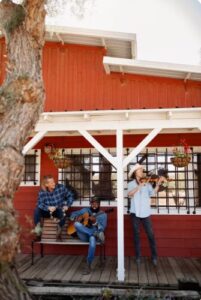
Small and medium enterprises (SMEs) and startups benefit from the affordability and flexibility of refurbished portacabins.
Benefits
- Low Overhead: Affordable compared to permanent offices, ideal for budget-conscious businesses.
- Flexibility: Easy relocation as businesses grow or change locations.
- Customization: Tailored for pop-up shops, coworking spaces, or storage.
Applications
- Pop-Up Retail: Temporary stores for product launches or seasonal sales, with branded exteriors.
- Coworking Spaces: Modular offices with internet, desks, and acoustic insulation for freelancers.
- Storage Units: Secure spaces for inventory or equipment, with lockable doors.
- Temporary Offices: Compact units for startup teams, with modern amenities.
Success Factors
- Scalability: Add units as the business expands, creating larger facilities.
- Rapid Setup: Deployed in days, enabling quick launches.
- Aesthetic Appeal: Modern or branded designs attract customers or clients.
UAE-Specific Examples
- Pop-Up Cafe in Dubai: Refurbished portacabin with kitchenette and modern decor.
- Freelancer Hub in Sharjah: Modular office with high-speed internet and ergonomic furniture.
- Retail Kiosk in Abu Dhabi: Branded unit for product launches at festivals.
Refurbished portacabins enable SMEs and startups to operate efficiently and flexibly.
Cultural and Aesthetic Considerations in the UAE
Refurbished portacabins can reflect the UAE’s rich cultural heritage and aesthetic preferences, enhancing their appeal.
Cultural Adaptations
- Majlis-Style Interiors: Traditional cushioned seating, Arabic rugs, and decorative elements for social gatherings.
- Mosque Facilities: Prayer rooms with mihrab, qibla alignment, and ablution areas.
- Luxury Designs: High-end finishes like wood paneling or marble-effect flooring for VIP or residential use.
Aesthetic Enhancements
- Traditional Elements: Arabic calligraphy, geometric patterns, or arched windows on exteriors.
- Modern Designs: Sleek, minimalist finishes with glass or aluminum for urban settings.
- Branding: Custom logos, colors, or cultural motifs for visibility and identity.
Applications
- Community Events: Majlis-style cabins for weddings, Ramadan gatherings, or cultural festivals.
- Religious Functions: Portable mosques or prayer rooms for remote or urban areas.
- Tourism: Cabins with UAE-inspired designs for desert camps or coastal resorts.
- Corporate Use: Branded units with modern or traditional aesthetics for offices or showrooms.
Examples
- Majlis Cabin in Abu Dhabi: Traditional decor for community gatherings, with cushioned seating.
- Portable Mosque in Fujairah: Prayer room with mihrab and cultural motifs.
- Desert Lodge in Ras Al Khaimah: Eco-friendly cabin with Arabic-inspired interiors.
These adaptations ensure refurbished portacabins resonate with UAE’s cultural and aesthetic values.
Refurbished Portacabin in UAE’s Event Industry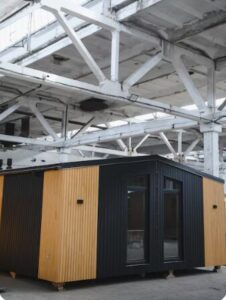
The UAE’s vibrant event industry relies heavily on refurbished portacabins for temporary infrastructure.
Applications
- Ticket Booths: Compact units with ticket windows, counters, and secure storage.
- Security Cabins: Small units with visibility, communication systems, and lockable doors.
- VIP Lounges: Luxury interiors with plush seating, climate control, and branded designs.
- Storage Units: Secure spaces for event equipment, sound systems, or decorations.
- Changing Rooms: Private spaces with mirrors, seating, and sanitation for performers.
Benefits
- Rapid Setup: Deployed within hours, ideal for time-sensitive events.
- Portability: Easy to relocate between venues, such as Dubai Expo or Abu Dhabi festivals.
- Customization: Branded exteriors or tailored interiors enhance event aesthetics.
- Durability: Weather-resistant materials withstand outdoor conditions.
Examples
- Exhibition Booth at Dubai Expo: Branded ticket booth with digital displays and secure storage.
- Festival Lounge in Abu Dhabi: VIP cabin with luxury finishes and climate control.
- Sports Event Security Post in Sharjah: Compact unit with visibility and communication systems.
Refurbished portacabins provide reliable, flexible infrastructure for the UAE’s event sector.
Global Comparison: Refurbished Portacabin in UAE vs. Other Markets
Comparing the UAE’s refurbished portacabin market to other regions provides context for its unique position.
UAE vs. GCC
- UAE Advantages: Advanced refurbishment processes, strict regulations, and sustainability focus.
- GCC Trends: Similar use in construction and events, but less emphasis on eco-friendly materials or cultural adaptations.
- Key Differences: UAE’s hotter climate requires superior insulation (R-13 to R-19) and UV coatings.
UAE vs. Europe
- UAE: Focus on rapid deployment and climate-resistant designs for temporary infrastructure.
- Europe: Emphasis on residential conversions or permanent installations, with less focus on portability.
- Key Differences: Europe uses heavier materials (e.g., concrete-based units), while UAE prioritizes lightweight, portable designs.
UAE vs. Asia
- UAE: High standards for fire safety, customization, and sustainability.
- Asia: Larger-scale production but less focus on refurbishment quality or climate-specific upgrades.
- Key Differences: UAE’s regulatory framework ensures stricter compliance than many Asian markets.
UAE’s Unique Position
The UAE’s refurbished portacabin market is distinguished by:
- Climate Adaptation: Designs tailored for extreme heat, humidity, and sandstorms.
- Regulatory Rigor: Compliance with fire, safety, and environmental standards.
- Cultural Relevance: Options for traditional or modern designs reflecting UAE’s heritage.
- Rapid Development: Quick deployment for fast-paced projects aligns with UAE’s growth.
These factors make refurbished portacabins a critical solution for the UAE’s dynamic needs.
Conclusion
Refurbished portacabins are a transformative solution for the UAE’s diverse space needs, offering sustainability, flexibility, and durability. From construction sites and schools to healthcare facilities, event venues, and remote community projects, these structures provide a cost-effective, eco-friendly alternative to traditional construction. Their refurbishment process ensures high quality, compliance with UAE’s stringent regulations, and adaptability to the region’s challenging climate. With advancements in technology, sustainability, and cultural design, refurbished portacabins are poised to play a pivotal role in the UAE’s future infrastructure.
Frequently Asked Questions
What is the lifespan of a refurbished portacabin?
With regular maintenance, refurbished portacabins can last 10–20 years, depending on material quality, environmental exposure, and usage intensity.
Are refurbished portacabins safe for UAE’s climate?
Yes, they are upgraded with high R-value insulation, UV-resistant coatings, and corrosion-resistant materials to withstand heat, humidity, and sandstorms.
How do fire-rated portacabins differ from non-fire-rated ones?
Fire-rated units use materials like gypsum boards or mineral wool, tested for 30–60 minute fire resistance, meeting UAE’s strict fire codes, while non-fire-rated units are suitable for low-risk applications.
Can refurbished portacabins be customized?
Yes, they can be tailored with partitions, plumbing, HVAC, or cultural designs (e.g., majlis-style interiors) to meet specific functional or aesthetic needs.
What are the environmental benefits?
Refurbishment reduces waste, conserves resources, and incorporates energy-efficient features like insulation or LED lighting, aligning with UAE’s sustainability goals.
How are refurbished portacabins deployed in remote areas?
They are lightweight (2–5 tons), equipped with off-grid features (e.g., solar panels), and designed for rapid setup (1–3 days), making them ideal for remote sites.
What maintenance is required?
Regular checks on structure, insulation, systems, and coatings, with cleaning and repairs every 6–12 months to ensure longevity and compliance.
